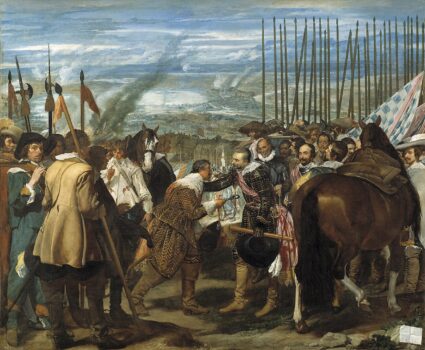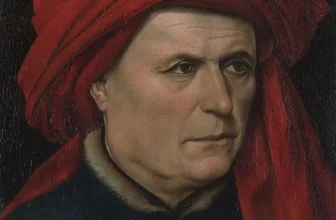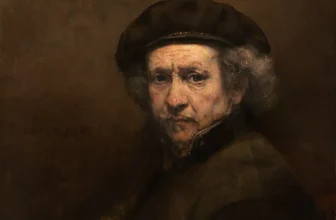Meaning of The Surrender of Breda Painting by Diego Velázquez
Diego Velázquez’s The Surrender of Breda (La rendición de Breda), painted between 1634 and 1635, stands as one of the most iconic masterpieces of Spanish Baroque art. Often regarded as a powerful visual narrative of military dignity and political propaganda, this monumental painting is not only a remarkable artistic achievement but also a rich tapestry of historical symbolism, nuanced human expression, and the ideals of 17th-century Spanish imperialism. Commissioned to glorify Spain’s military victories, the painting immortalizes the 1625 capitulation of the Dutch city of Breda to the Spanish during the Eighty Years’ War.
Currently housed in the Museo del Prado in Madrid, The Surrender of Breda is a prime example of historical painting, a genre aimed at conveying moral, political, or heroic messages through scenes of historical importance. Yet beyond its historical storytelling, the painting captures something deeper: the grace in defeat, the nobility of victors, and the complex interplay between war and humanity.
The Story Behind The Surrender of Breda
To understand the painting fully, one must first grasp the historical backdrop. The event depicted occurred during the Eighty Years’ War (1568–1648), a prolonged and bitter conflict between the Spanish Empire and the Dutch provinces, which sought independence from Spanish rule.
The city of Breda, in the southern Netherlands, was besieged by Spanish forces under General Ambrogio Spinola from August 1624 to June 1625. After months of resistance and starvation, the Dutch commander Justin of Nassau surrendered the city. What made this moment exceptional was the dignified and humane manner in which the surrender took place. Spinola, respecting his adversary’s bravery, treated him with honor and allowed him and his troops to leave with their arms and flags, a rare gesture in the brutal landscape of 17th-century warfare.
This event, though ultimately a brief Spanish success in a war that would end in Dutch independence, was a perfect opportunity for propaganda. King Philip IV of Spain commissioned Velázquez to depict it as part of a broader decorative campaign for the Hall of Realms (Salón de Reinos) in the Buen Retiro Palace, a space meant to glorify the Spanish monarchy and its military prowess.
Who Painted The Surrender of Breda and How It Was Created
Diego Rodríguez de Silva y Velázquez, born in 1599 in Seville, was the leading artist of the Spanish Golden Age. Court painter to King Philip IV, Velázquez was already well established by the time he was asked to contribute to the decoration of the Buen Retiro Palace.
Velázquez approached the painting not merely as a recorder of events but as a dramatist, interpreter, and psychologist. Though he was not present at Breda, he drew heavily from first-hand accounts, military maps, and possibly discussions with General Spinola, who had become a personal acquaintance of the artist during a diplomatic mission to Italy.
The painting was executed using oil on canvas and measures approximately 307 cm × 367 cm (121 in × 144 in). It stands out not only for its scale but for its extraordinary composition, naturalism, and the emotional weight it conveys. Velázquez was known for his loose, almost impressionistic brushwork, his mastery of light, and his ability to infuse even the most rigid of subjects with psychological complexity. All of these qualities are present in The Surrender of Breda.
What The Surrender of Breda Is All About
At its core, The Surrender of Breda is about the concept of victory tempered by honor, and defeat met with dignity. It depicts the moment when Justin of Nassau hands over the keys of the city to General Spinola. But rather than portraying the Dutch as humiliated or broken, Velázquez presents both leaders with grace and mutual respect.
The painting is structured to emphasize the act of surrender as a noble exchange between two equals. Spinola reaches out with a hand of reassurance, preventing Justin from kneeling, reinforcing a sense of chivalry and magnanimity. The soldiers in the background, Spanish on the right, Dutch on the left, stand as silent witnesses to this symbolic transfer of power, embodying both the tension and the decorum of the event.
The painting thus becomes more than a depiction of conquest; it is a visual manifesto for how war, while destructive, can also reveal moments of humanity, civility, and moral virtue. It speaks to the Spanish ideal of the “noble victor,” a theme the Habsburg monarchy was eager to promote.
Symbolism and Meaning in The Surrender of Breda
The painting is dense with symbolic meaning and artistic choices that elevate it from mere reportage to high art.
1. The Central Gesture
The most symbolic moment is, of course, the handing over of the keys. The gesture transcends its literal meaning. Spinola’s act of stopping Justin from kneeling reflects an ethos of respect, this is a surrender, not a humiliation. It shows the idealized image of the Spanish as magnanimous victors and upholders of chivalric values.
2. Contrasting Armies
On the right side, the Spanish soldiers are portrayed with order, strength, and confidence. They carry their long pikes upright, forming a rhythmic vertical pattern that suggests discipline and unity. In contrast, the Dutch soldiers on the left appear weary, disordered, and subdued, capturing their emotional and physical exhaustion after the siege.
3. The Landscape
The background shows the smoke and destruction of the battlefield, a reminder that the peace seen in the foreground was hard-won. It adds a layer of melancholy and gravity, implying that this civility came at a cost.
4. Clothing and Armor
The detailed depiction of armor, fabrics, and facial expressions adds to the symbolic depth. The Spanish wear richer, more refined attire, underscoring their power and cultural superiority. The Dutch, while not caricatured, are clearly distinguished by more subdued colors and simpler gear.
5. Positioning and Composition
The slightly lowered stance of Justin and the elevated posture of Spinola suggest a subtle hierarchy, but not one of shame. Instead, it represents the inevitability of loss in war and the grace in acknowledging it. The verticality of the pikes, and the diagonals leading toward the center, guide the viewer’s eye to the handshake, the painting’s emotional and thematic climax.
What Is Happening in The Surrender of Breda?
In a literal sense, the painting captures the precise moment of the city’s surrender: the transfer of the keys from the defeated Dutch commander Justin of Nassau to the victorious Spanish general Ambrogio Spinola.
But what’s truly “happening” is far more profound. This is not a moment of conquest, but a moment of connection. Spinola’s tender gesture, the subdued grief of Justin, the calmness of the surrounding soldiers, each element contributes to an atmosphere of solemn respect rather than triumphalism.
It is a scene staged as an idealized memory, a moment when both victor and vanquished are ennobled by their conduct. Velázquez thus elevates the painting from a mere military celebration to a meditation on leadership, humility, and the complexities of honor in war.
The Artistic Style of The Surrender of Breda
The painting is a masterpiece of Baroque art, a style characterized by dramatic realism, intense emotion, and intricate detail. However, Velázquez’s unique contribution to Baroque aesthetics was his restraint. Unlike the bombastic theatricality seen in many Baroque works, The Surrender of Breda employs a more subdued, realistic approach.
Velázquez masterfully balances clarity and impressionism. His loose brushwork, especially in fabrics and faces, becomes more refined when viewed from a distance, a technique later admired by artists like Édouard Manet and the Impressionists. The psychological realism in the expressions and postures of his subjects anticipates modern portraiture and elevates the painting’s emotional depth.
He uses natural light to give the scene a luminous, almost divine quality without resorting to overt symbolism or religious motifs. The composition is classical, balanced, and serene, anchored by the key exchange, yet filled with subtle dynamism in the surrounding gestures and glances.
Where Is The Surrender of Breda Located Today?
Today, The Surrender of Breda resides in the Museo del Prado in Madrid, Spain, where it continues to be one of the most visited and revered works in the museum’s vast collection. It stands among Velázquez’s other masterpieces, including Las Meninas and The Triumph of Bacchus, and is regularly studied by scholars, artists, and historians alike.
The Prado offers visitors a chance to see the painting up close and appreciate its scale, texture, and intricate detail, an experience that transcends digital reproductions. It remains a centerpiece of Spanish national pride and a key to understanding the political and cultural values of 17th-century Spain.
The Surrender of Breda is far more than a military painting, it is a profound human drama that explores themes of honor, respect, and the tragic nobility of war. In capturing a moment of rare civility amidst the cruelty of conflict, Velázquez offers a vision of what warfare could be: not just a struggle for territory, but a test of character and leadership.
Its impact goes beyond aesthetics or propaganda. By infusing a political event with empathy and dignity, Velázquez created a work that resonates across time. It is a visual essay on power, compassion, and humanity, a masterclass in both painting and philosophy.
In every brushstroke, from the glint of armor to the downcast eyes of the defeated, The Surrender of Breda reminds us that even in victory, there is room for grace, and even in loss, there can be honor. It remains one of the most eloquent testaments to the enduring power of art to narrate, to elevate, and to humanize history.




